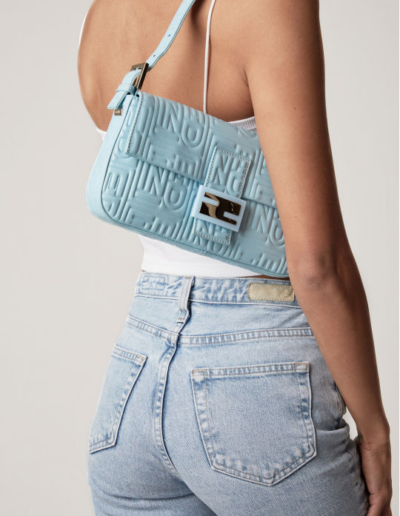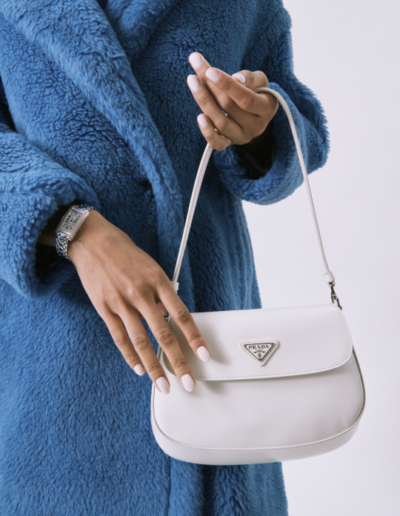RESALE MUST-KNOWS
The Misconceptions
Behind Circular Fashion
By Alix S, Jul 12, 2021

“Circular fashion”
is difficult to
navigate.
The term “circular fashion” can be confusing. Here are 10 myths about one of fashion’s buzziest terms, and how it helps reduce the 92 million tons of fashion waste that’s generated annually.
1. Misconception:
Recycling plastics into usable materials is a good way to help save the environment.
Truth:
While some brands have built whole identities on the fact that their fabrics are made from recycled materials (such as plastic bottles, or recycled nylon fabrics), the reality is that materials like polyester made from recycled PET bottles or polyester can also contribute microplastics to the global water systems. In order to recycle these materials, high temperatures must be used, and this processes off gasses suspected carcinogens into our atmosphere.
2. Misconception:
By creating capsule collections made from recycled materials, some companies are fully embracing a circular fashion business model.
Truth:
Most environmentalists feel that this is a “fair-weather friendship”/marketing ploy to appeal to their customer base. The only way to truly embrace the circular fashion movement is to produce better quality products and prolong the life of manufactured items by buying “gently used” resale items or for the companies to promote repairs by the brand.
3. Misconception:
By donating your clothing to a charity, its life will be prolonged because it will be bought by people in need who shop at their stores.
Truth:
America has donated way more clothing to the needy that can possibly be used/absorbed, and most of those items are fast fashion that are not made well, and tend to not last longer than one season. Charities will take what they can from your donation and then sell the rest to a recycler who will further break it down to rags or insulation — or even sell items to developing countries.
4. Misconception:
Only wealthy people can participate in circular fashion.
Truth:
Anyone can donate and shop second hand. By buying gently-used items, you can help to support small businesses, and find high quality, lasting clothing for a decent price. By doing this you are giving the item a second chance at life and keep it in the sustainable fashion cycle — saving it from ending up in the landfill. By not shopping for new clothing you have also helped to save resources that would have otherwise been used to manufacture new products.
5. Misconception
Brands that promote sustainability are sustainable.
Truth
Always do your homework when shopping labels that claim to be sustainable. An item might not be 100 percent organic, and even though the manufacturer says something is recyclable, it may not be.
6. Misconception:
Clothing made from natural materials is better for the environment and can be composted.
Truth:
Unless the item is completely natural — not dyed or processed with chemicals, this is completely false. Silk, cotton, wool and other natural materials are heavily processed/washed with chemicals, dyed and then usually processed in a final rinse of chemicals.
7. Misconception:
Sustainable/circular fashion is just another way to say “recycling.”
Truth:
Circular (or sustainable) fashion is just that — circular, while a more linear fashion model is a straight line. Circular fashion keeps items in the world for longer than one use, and in circulation for as long as possible before it is discarded or repurposed.
8. Misconception:
Sustainable fashion is ugly.
Truth:
There are many trendy and stylish things to be found in second hand stores and websites. Fashion and trends come and go throughout the years, and what comes around goes around. That choker you were thinking of buying? People wore that in the ‘90s! If it’s not fashionable now, give it a few years and you will see your entire wardrobe flash before your eyes as a trend on instagram.
9. Misconception:
Fashion brands that have committed to reducing their carbon footprint in the last year will be able to immediately pivot from current linear business models in order to participate in circular fashion.
Truth:
While it seems like easy changes, there is a lot that needs to be done. It will take years for the technology to be developed in order to build the systems needed to accomplish this goal, and drastically change their business models.
10. Misconception:
Consumers dtrgdon’t have the power to affect change in the fashion industry.
Truth:
Yes! We do! By shopping second hand and gently used, we can keep clothing and accessories in circulation for years longer than they were intended to be. Take good care of your items and they will last – even fast fashion. And when you are done with it, give it a new lease on life by either selling or donating it (as long as it is in good condition) and furthering the circle of life.



